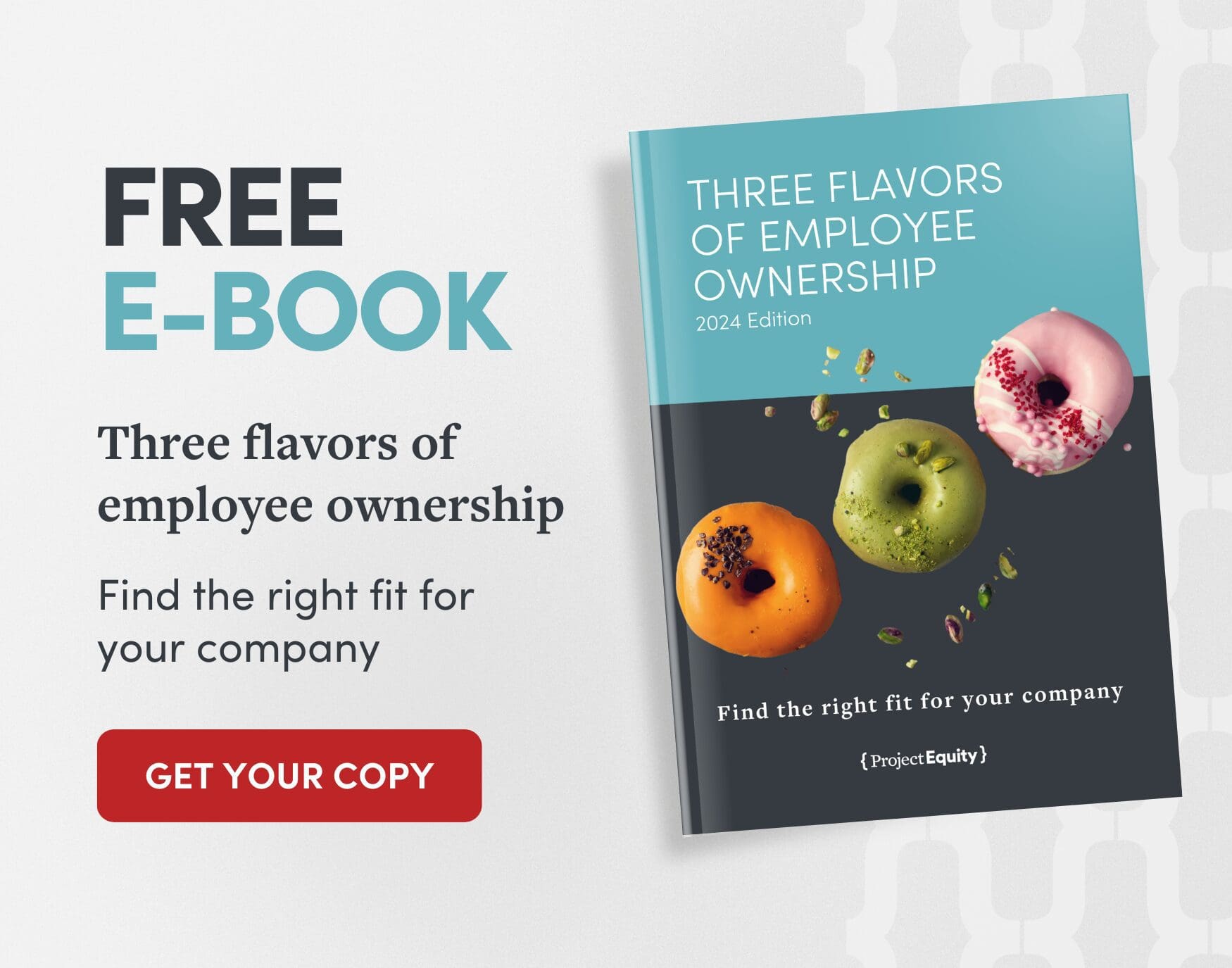Top myths about employee ownership
- Genevieve Adams
Sometimes, when we first talk with business owners about employee ownership (EO), we get a hesitant response. We’ve found that there are some preconceived notions about employee ownership, but once we can clear these up, they soon realize the incredible potential of this option.
The following are the top myths about employee ownership that we most often hear:
Myth #1: My employees can’t run my company
With employee ownership, your employees would not be running your company alone. Management will essentially stay the same. The primary difference is that there will now be a Board of Directors that employee-owners elect, which strengthens the participatory culture and ensures the employees’ voices in strategic decisions.
Myth #2: My employees don’t want to buy my company
Employee ownership is a lesser-known model that has many employee-owners, versus just one or a handful. No individual employee would buy your company alone. Project Equity has found that the key to helping employees make informed decisions is to clearly describe what shared ownership looks like and answer any questions they have about the ownership model.
Myth #3: Employees will have to “pay out of pocket” to buy the business
Employees aren’t obligated to finance the transaction. Usually, it’s through a leveraged buyout. Depending on the type of EO, EO transition financing may include senior debt from banks, community development financial institutions (CDFIs), or impact investment funds; junior and subordinate debt from seller financing; mezzanine debt from other specialized lenders; and voting and non-voting preferred equity.
Myth #4: I won’t get a fair price for my company if I sell it to my employees
Sellers who transition their companies to employee ownership will receive market value. If you’ve got a strategic buyer in the wings, your options might be different.
Myth #5: I can’t exit the business on my own timeline or terms
You have many options to stay in the business. Many non-retirement transaction opportunities are available. You can stay on in your leadership role, become a regular employee, serve as a chairman or strategic advisor, and more.
Myth #6: It sounds complicated and difficult
Any business succession process takes effort. Employee ownership lines up favorably in terms of timeline and cost. The good news is that Project Equity helps with every step of the process—from exploration, through the sale, then we support the employee-owners to deepen their ownership culture. To learn more, request a free consultation.
Yes. Sellers typically receive market value, just like with most outside buyers, and can structure the exit on terms that suit them—whether by staying on in leadership, transitioning gradually, or serving as an advisor.
About the author
Genevieve has built her career around providing marketing direction, print and web materials and blog content for small and medium-sized businesses, including her own. She joined the Marketing Team after contracting with Project Equity for two years. At Project Equity, she helps increase awareness of employee ownership through local and national outreach. Genevieve is passionate about equality in all forms and is honored to use her creativity and knowledge to advance employee ownership.

Article details
Audience
Topic
Not applicable


